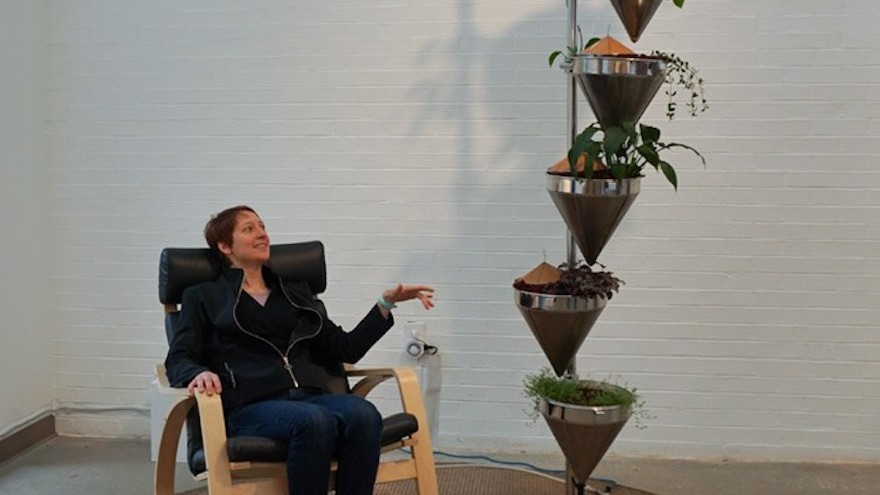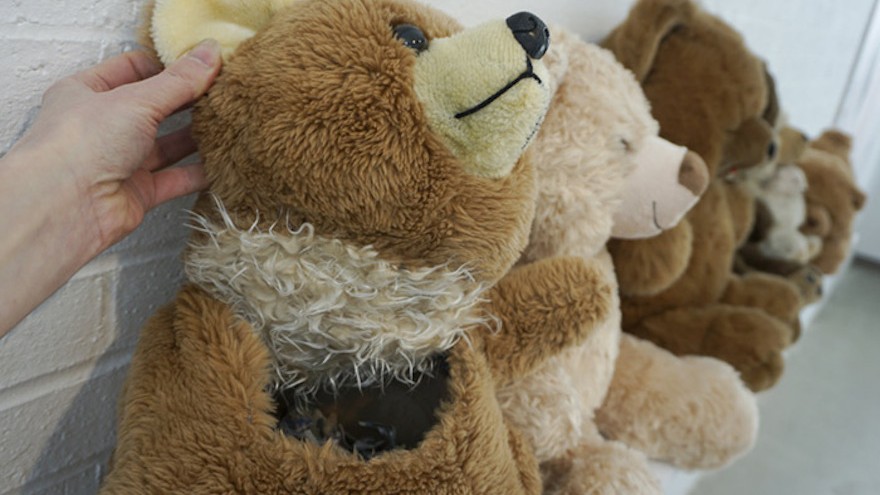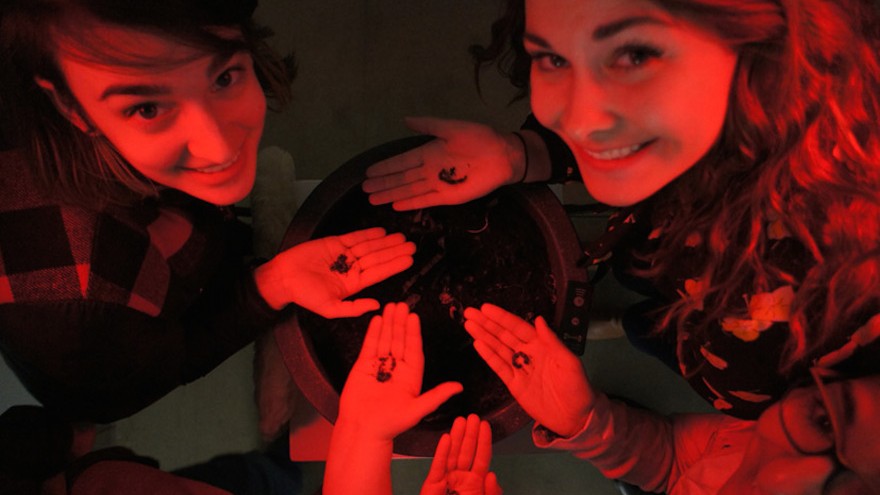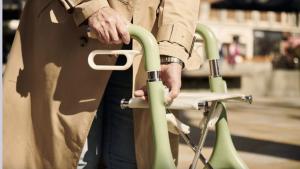The idea of sharing a living space with worms is enough to send shivers down the spine despite the fact that there are many environmental benefits from shacking up with the wriggly critters. Artist Amy Youngs is trying to get people to welcome worms into their homes with her recent exhibition of worm projects called the Vermiculture Makers Club.
At home, worms can be used to eat waste paper and food scraps, providing a domestic composting system that can significantly reduce our greenhouse gas footprint. Think of them as an in-house disposal service that can get rid of organic waste that would otherwise be releasing toxic methane in landfills and dumpsters. The worms munch on the waste and turn it into rich fertiliser that can be used to feed domestic gardens or plants.
Youngs’ exhibition is made up of a series of individual projects, which advocate a symbiotic relationship between humans and worms. A lot of the projects revolve around disguising worm ecosystems in household items, such as teddy bears, plant stands and pots. Youngs uses the “out of sight out of mind” approach to create comforting interfaces that help us accept the worms as permanent lodgers.
Vermiculture Makers Club invited guests to bond with worms through various mediums including art, design, music and interactive experiences. Worm Selfie Booth is a project that received a lot of attention as visitors lined up to pose for a picture with composting worms.
The artist also incorporated her 2012 hydroponic plant tower into the exhibition. The contraption, called the Machine for Living Interdependently, is a cross between a worm composting system and an urban garden system powered by a rocking chair.









